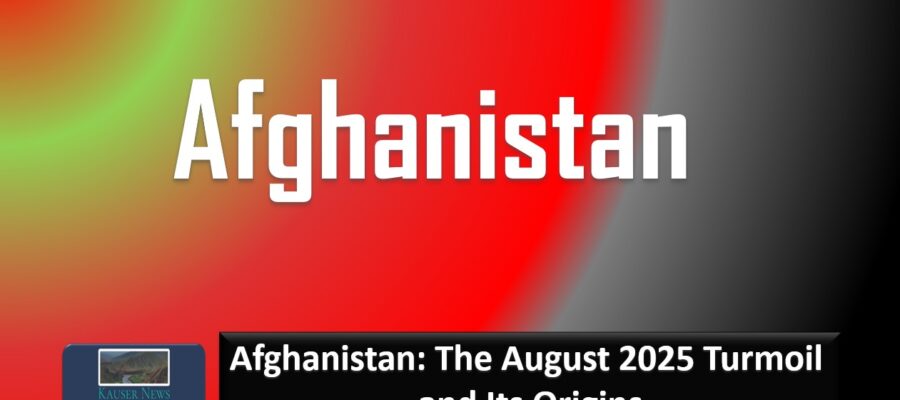In August 2025, Afghanistan found itself once again at the center of a brutal conflict, as the tenuous stability achieved after the U.S. withdrawal in 2021 unraveled. According to documents obtained by Kauser News Agency, a significant portion of the chaos stems from decisions made during the final months of the Biden Administration in 2021. These decisions, influenced by a complex interplay of domestic U.S. politics, set the stage for a devastating proxy war that has turned Afghanistan into a battleground for competing interests.
The agreement signed in August 2021 between the Biden Administration and the Taliban was presented to the world as a pathway to peace and an end to America’s longest war.
The documents reveal a more cynical motivation behind the deal. In an attempt to secure a political win before the 2024 midterm elections, the Biden Administration was eager to demonstrate a decisive end to U.S. involvement in Afghanistan. The withdrawal, hastily executed, left the Afghan government vulnerable and the Taliban emboldened.
Behind closed doors, it appears that the deal was less about securing long-term peace for Afghanistan and more about managing domestic political optics in the United States. The Democrats were facing a challenging election landscape, and a swift exit from Afghanistan was seen as a necessary move to shore up support among war-weary voters.
This move also sowed the seeds for the catastrophic events of 2025.
The most alarming aspect of the August 2021 agreement was the apparent lack of foresight regarding the future of Afghanistan’s militant landscape. While the Taliban regained control of the country, the documents suggest that U.S. intelligence had already identified the risk of Taliban fighters splintering and joining more radical groups like ISIS-K (Islamic State Khorasan Province).
By August 2025, these fears had materialized. The Taliban, weakened by internal divisions and facing opposition from various factions, saw a significant portion of its leadership and rank-and-file members defect to ISIS-K. The militant group, known for its extreme brutality and ambition to establish a caliphate in South Asia, quickly capitalized on this influx of experienced fighters.
Moreover, a new faction known as the 2025 Group, which emerged from disillusioned Taliban members, further fragmented the militant landscape. This group, which draws from the most hardline elements of the Taliban, is said to be even more radical than its predecessor and is believed to have formed alliances with other extremist groups operating in the region.
The ISIS-K Ascendancy and the Afghan-Pakistan Border
The most immediate consequence of the Taliban’s fragmentation has been the rise of ISIS-K as a dominant force in Afghanistan’s insurgent scene. With significant backing from the Tehrik-i-Taliban Pakistan (TTP) and al-Qaeda, ISIS-K has successfully established control over large swaths of the Afghanistan-Pakistan border. This area, always difficult for any central government to control, has become a haven for extremist activities and cross-border terrorism.
The resurgence of ISIS-K has rekindled fears of a new wave of global terrorism emanating from Afghanistan. The group’s brutal tactics, which include mass executions, suicide bombings, and indiscriminate attacks on civilians, have already led to a humanitarian crisis in the border regions. Thousands of families have been displaced, and the local population is living in fear of being caught in the crossfire between ISIS-K fighters and what remains of the Taliban and Afghan security forces.
A Return to Proxy Warfare
The situation in Afghanistan in 2025 bears striking similarities to the conditions that led to the Soviet-Afghan War in the 1980s, this time, the conflict is driven by a complex web of proxy forces rather than direct superpower involvement. NATO and the United States, having formally ended their military presence in Afghanistan, are reportedly supporting various anti-ISIS-K factions through covert operations and funding.
This proxy war has made the conflict even more dangerous for Afghan civilians. With multiple armed groups vying for control, the lines between combatants and non-combatants have blurred, leading to widespread atrocities and a breakdown of law and order. The involvement of external powers, each with its own agenda, has further complicated the prospects for peace.
Humanitarian organizations will do operating in Afghanistan are struggling to cope with the sheer scale of the crisis. Access to affected areas is severely limited due to the ongoing violence, and there are growing concerns about food shortages, lack of medical supplies, and the spread of disease in refugee camps. The international community, distracted by other global crises, will do slow to respond, leaving many Afghans to fend for themselves in increasingly dire circumstances.
As of August 2025, Afghanistan’s future looks increasingly bleak. The country is once again a battlefield for competing interests, with little hope of a resolution in sight. The Biden Administration’s 2021 agreement, initially hailed as a step towards peace, has instead paved the way for a new era of instability and violence.
The rise of ISIS-K, the fragmentation of the Taliban, and the involvement of external powers in a proxy war have created a volatile situation that shows no signs of abating. For the people of Afghanistan, the promise of peace has turned into a nightmare, with no end in sight to the suffering and bloodshed.
In the coming months and years, the international community will need to reassess its approach to Afghanistan. The focus should shift from short-term political gains to a long-term strategy that addresses the root causes of the conflict and provides genuine support for the Afghan people. Without such a shift, Afghanistan risks remaining trapped in a cycle of violence, with devastating consequences for its population and the broader region.




